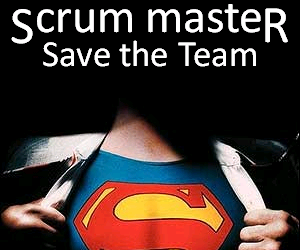Running A Good Scrum

Whether or not they follow other precepts of Agile development, many software companies have implemented some form of a ‘scrum’ – a short daily stand-up in which team members report on their current progress. A well run scrum can be an extremely valuable communication asset for team members. A poorly run scrum can be an annoying and time consuming hassle that turns teams off of scrum. And even though teams are supposed to be “self-organizing”, in my experience a good scrummaster is always important for a good scrum outcome. Below I’ve outlined a few common problems for scrums, and things the scrummaster can do to keep things on track.
Here are some tips to make sure your scrum stays awesome.
Problem: Scrum updates turn into discussions between team members
Someone mentions a tricky problem they’ve been working on, someone else says “Have you tried…”, another team member adds his or her opinion and suddenly the scrum has turned into a 15 minute discussion of one person’s problem instead of a 15 minute round-up. Discussing problems and solutions is with your co-workers is extraordinarily helpful and valuable – but not during the scrum. A few of these interruptions can quickly add up to a lot of time wasted by team members waiting for their turn to speak. If discussions between team members are a problem, the scrummaster needs to know when to step in (hint: soon) to ask people to take things off line.
Maybe the scrum is the only time in the day when all your team members are together and some of these questions can be answered? Try asking those interested to stay after the scrum to sort it out, maybe start getting the team together for brown-bag lunches to discuss things, or see if any team members can be relocated so that the team is all physically located in the same area of the building. What you don’t want is to have five people patiently (not so patiently) waiting while three people finish a discussion.
Problem: Team members are long-winded, confused, or go off on tangents
At the scrum, its important to stick to only the highlights of what you are working on and it is the scrummaster’s responsibility to keep things moving if people start to delve into too much detail. If some team members try to dive deeply into problems or go off on tangents, it’s the scrummaster’s responsibility to bring them back to the point.
This can be especially tricky if you are the scrummaster and the deep diver happens to be your boss, your boss’s boss, or another company higher-up who likes the sound of his or her own voice. For the good of the team, its important to not let fragile egos or company politics get in the way of a good scrum. Let everyone know that the scrum needs to move on – maybe by suggesting a separate meeting to talk about this topic.
Some team members may also have trouble organizing their thoughts. Sometimes people aren’t used to much public speaking and can get flustered or off track. In these situations it can be helpful to fall back on the three scrum questions – What did you do yesterday? What are you going to do to day? What’s blocking (preventing) you from finishing? Getting back to these three questions usually helps bring the focus back.
Problem: Too much chatter when the scrum is going on
Sometimes team members don’t start a group discussion, but they do start talking or whispering amongst themselves about something. This not only draws attention away from the current speaker but it sends a message to the entire team that the scrum is not important or worth listening to. It’s disrespectful and annoying and should be stopped ASAP. Practice your best librarian “SHH!” on people who talk during the scrum.
